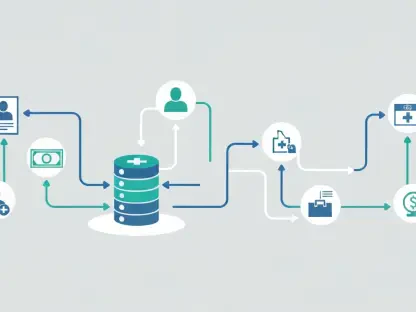Artificial intelligence (AI) is rapidly transforming the landscape of enterprise operations, and the excitement surrounding AI, especially generative AI (gen-AI) and predictive AI, is palpable across various industries. However, despite the growing enthusiasm, the question remains whether enterprises are truly ready to embrace these powerful technologies and integrate them into their existing operations. The readiness of enterprises involves not only the adoption of AI technologies but also the preparation of existing infrastructures and governance frameworks to handle the complexities and demands that AI brings.
Diverse and Evolving Infrastructure
The varied and ever-changing nature of underlying tech stacks poses a significant challenge for enterprises eager to harness AI’s full potential. Many organizations are discovering that their existing systems are not sufficiently robust to support modern AI applications. As AI technologies advance, the demand for scalable architectures and efficient data processing capabilities increases, causing traditional infrastructures to fall short. Hence, to move forward, companies must confront the complexities of updating and adapting their infrastructure to avoid bottlenecks and ensure smooth AI integration.
An effective AI strategy calls for a solid technical foundation. This foundation includes incorporating diverse data sources, integrating cutting-edge hardware and software solutions, and implementing efficient data processing frameworks. Meeting these requirements can be daunting, particularly for organizations still tied to legacy systems that are incompatible with new AI demands. As enterprises look to bridge the gap between aspiration and operational readiness, substantial investment and strategic planning become necessary. Companies must develop long-term strategies that not only address current needs but are also scalable to accommodate future AI advancements.
Board-Level AI Engagement
Corporate boards are increasingly recognizing the strategic value of AI, which translates into substantial resource allocation towards AI initiatives across various sectors. This recognition and commitment from the top echelons reflect a broader understanding of AI’s potential to drive innovation, efficiency, and competitive advantage. However, the focus of these investments is not limited to generative AI alone. Predictive AI, though receiving less media attention, is equally critical to unlocking operational efficiencies and driving business insights, reflecting a comprehensive approach to AI adoption.
This board-level enthusiasm is driving a broad range of AI projects, spanning from customer service enhancements to optimizing supply chain logistics. Yet, the journey from strategic commitment to practical implementation remains fraught with challenges. As enterprises transition from pilot projects to full-scale deployments, the importance of a well-coordinated approach to both technology and governance becomes evident. The substantial involvement of corporate boards underscores a strategic priority for AI, ensuring that it remains at the forefront of business transformation initiatives.
Generative AI vs. Predictive AI
Generative AI often captures headlines with its transformative potential, capable of creating content and automating complex processes that were once considered unattainable. Its applications are wide-ranging and impactful, influencing diverse sectors from creative industries to complex manufacturing processes. However, while generative AI attracts significant media attention, predictive AI is more prevalent in production environments and is essential for critical tasks such as demand forecasting, risk assessment, and predictive maintenance—functions that are vital for sustaining a competitive edge in the modern marketplace.
Interestingly, the lines between generative and predictive AI are beginning to blur, as enterprises increasingly pursue projects that incorporate both types. This hybrid approach allows companies to leverage the best of both worlds, creating more sophisticated and tailored AI solutions designed to meet specific business needs. However, this merging of technologies demands a more nuanced understanding of AI capabilities and a carefully orchestrated integration strategy. By combining the strengths of both generative and predictive AI, enterprises can develop innovative solutions that drive significant value.
Early Adoption and Implementation Struggles
Despite the enthusiasm for AI, many enterprises are still in the early stages of adoption, particularly with generative AI, which remains in the nascent phases for over half of the surveyed organizations. Many companies are still navigating the planning, researching, or proof-of-concept phases, lagging behind in integrating gen-AI technologies into their production environments. Similarly, predictive AI, though more commonly adopted, still faces significant challenges in achieving full operational integration, with nearly half of the respondents yet to fully implement predictive AI projects in their workflows.
Transitioning from pilot initiatives to mainstream deployment presents a considerable hurdle. Technical challenges, such as integrating AI into existing workflows and ensuring data compatibility, often slow progress. In addition, organizational inertia and the need for cultural change can impede the swift adoption of AI. Overcoming these barriers requires a comprehensive approach that addresses technical, organizational, and cultural dimensions. Companies must foster a culture of innovation and agility, where AI initiatives are not only supported by robust infrastructures but are also embraced by a workforce prepared for change.
Infrastructure Adjustments and Governance
A consistent finding among surveyed organizations is the recognition of the need for robust infrastructure to support ongoing AI advancements. Over 90% of enterprises anticipate making infrastructure adjustments to accommodate generative AI projects, highlighting the urgent need for modernized data storage solutions, enhanced processing power, and upgraded network capabilities. However, investments in infrastructure alone are not sufficient; effective governance frameworks must likewise evolve to manage AI integrations responsibly and ethically, ensuring compliance with regulatory standards and maintaining public trust.
Strong governance is critical to managing AI integrations responsibly, with nearly all companies acknowledging the necessity of revamping their governance models. This involves establishing clear policies, protocols, and accountability mechanisms to ensure that AI deployments adhere to ethical standards and regulatory requirements. Effective governance frameworks guarantee that AI technologies deliver not only in terms of performance and efficiency but also in terms of responsibility and trustworthiness. Companies must develop comprehensive governance strategies that balance innovation with ethical considerations, ensuring sustainable and responsible AI growth.
Commitment to AI Development
Artificial intelligence (AI) is swiftly transforming how enterprises operate. The buzz around AI, particularly generative AI (gen-AI) and predictive AI, is evident across multiple industries. The enthusiasm is understandable, given AI’s potential to revolutionize business processes and decision-making. However, a significant question lingers: Are enterprises genuinely prepared to fully integrate these cutting-edge technologies into their existing systems? The readiness of businesses isn’t just about adopting AI tools. It extends to preparing current infrastructures to support and manage the complexities AI introduces. Robust governance frameworks are essential to handle ethical considerations, data privacy, and regulatory compliance in AI implementations. Moreover, workforce training becomes crucial to ensure employees can effectively work alongside these new technologies. Without appropriate preparation, the potential benefits of AI may be dampened by unforeseen challenges. Thus, enterprises must thoroughly evaluate their readiness to not only adopt AI but also to sustain and optimize its use within their operations.









